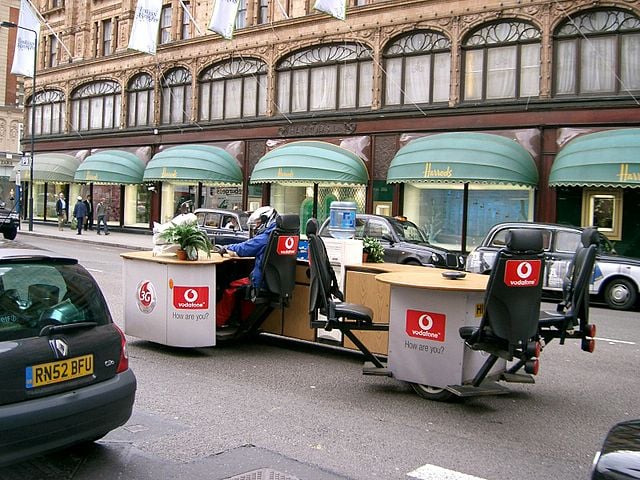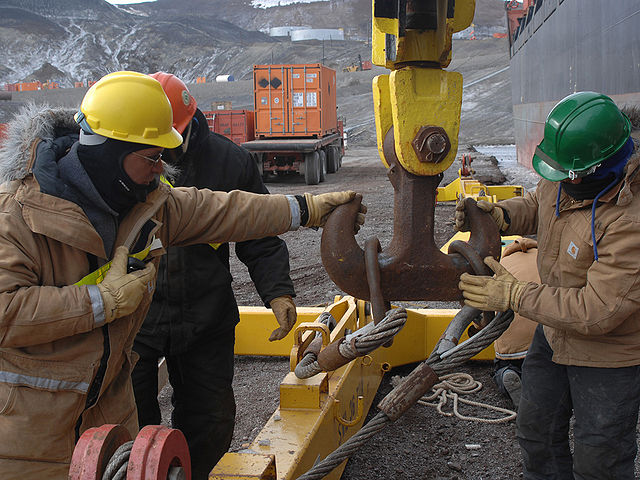Workforce Management and Flexibility in the Workplace
Posted by Jake Richardson Oct 28, 2013 7:00:00 AM on
A recent Forbes piece extolled the virtues of workplace flexibility as a driver of employee satisfaction. “Studies show that organizations that offer workplace flexibility have less absenteeism and turnover, and higher levels of engagement and productivity. Again, it comes down to control. We all need to feel in control of our lives, and by working with talent on flexibility, you grant them real control. They feel trusted and valued, and their investment in the work, and in the organization, grows.” ( Meghan M. Biro, 5 Reasons Why Workplace Flexibility Is Smart Talent Strategy)
Sceptics may balk at this notion, but is this hesitancy to accept workplace flexibility outdated and even potentially damaging? On tne surface, it is easy to say yes, because of many different changes in the workplace. For one, information technology is rapidly changing the way business is conducted. It has been somewhat common for organizations to allow remote workers for some years now. Additionally there are small companies that have only telecommuters and many start-ups function by having workers contribute from home in order to avoid the overhead associated with rent, utilities and office equipment. Working from home allows them to stay as lean as possible and conserve funds for only when they are absolutely necessary. Some home workers might also only be working for equity, so there is very little or even no capital investment. Without this kind of workplace flexibility, it would not be possible to make innovative, tactical organizations.
As a Deloitte analysis explained, "For example, the average company pays between $12,000 and $15,000 per employee in facility cost, yet 30 to 40 percent of physical workspaces are vacant at any given moment on a regular business day. Traffic jams cost Americans in urban areas an estimated 4.2 billion hours that flexible workers can convert into productive time. So as much as anything else, workplace flexibility is about happy directors and shareholders."
Further, in some cases working from home may increase productivity, "Countless studies confirm the link between workplace flexibility – particularly telecommuting – and productivity. Brigham Young researchers found that “Offering flexibility translated to anywhere from eight to 13 hours more a week of productivity per employee without adding stress.Managers who avoid excessive workload, distribute work fairly, allow flexible scheduling and are considerate of employees’ lives will bring increased revenue, said a study of 50,000 U.S. workers by International Survey Research." (Source: WFC Resources)
In fact, a document produced by the Executive Office of the President Council of Economic Advisers noted some of the major demographic trends taking place right now that suggest flexible workplaces will proliferate:
- Women comprise nearly one half of the labor force;
- In nearly one half of households all adults are working
- In 2008, approximately 43.5 million Americans served as unpaid caregivers to a family
member over the age of 50
- Nearly one fifth of employed people were caregivers who
provided care to a person over age 50.
- The increasing demand for analytical and interactive skills
those largely obtained through post
-Second ary education means it is all the more important and common for
individuals to pursue additional education while also working
Workplace flexibility requires greater trust of employees and this trust may be reciprocated back to the employer. While granting this level of trust may sound completely counterintuitive, it makes sense from the perspective that we have all used at some point: no one likes to be micromanaged. It is ironic that some management styles insist upon all workers being onsite, yet this is exactly where some employees spend more time chatting or being bogged down in overly long meetings that waste time and sap their energy.
While flexible workplaces may currently number in the minority and so this kind of openness and employee accommodation appears 'fringe' to some, it could be argued that it makes too much sense to ignore. To strike a balance between greater flexibility and employee accountability, tracking of projects and hours may be necessary with time and attendance software, such as that offered by Pacific Timesheet.
Image Credit: Russavia, Wikipedia
50% of Companies Use Mobile Apps to Engage Employees
Posted by Jake Richardson Oct 25, 2013 7:00:00 AM on
A survey of 600 companies by Vanson Bourne this year found that only about half are using mobile apps to enage their employees. A little less are using them to interact with their customers.
This is not good news, considering the fact the app developers are creating many new technological solutions and will continue to do so. The mobile market is also growing, thanks to increasingly more powerful devices such as smart phones and pads. Eventually, the workforce may not ever use anything as large and cumbersome as a desktop and even laptops may be on the way out.
Outdated operating systems that are slow and crash too often, in addition to having security issues need not be unreasonably supported in the coming years. Some of these new apps may eventually become indispensable, rather than auxilliary add-ons.
Topics: Employee reports
Construction Morning Huddle Meetings Good for Safety and Daily Work Plans
Posted by Jake Richardson Oct 24, 2013 7:00:00 AM on
Workplace accidents cost billions each year, "In addition to their social costs, workplace injuries and illnesses have a major impact on an employer's bottom line. It has been estimated that employers pay almost $1 billion per week for direct workers' compensation costs alone." (OSHA.gov)
Main Cause of Increase in Part-time Jobs Not Obamacare, Says Study
Posted by Jake Richardson Oct 14, 2013 10:32:00 AM on
Two researchers at the Federal Reserve Bank of San Francisco have conducted a study that contradicts the general notion found in some press stating that the Affordable Care Act is likely to wreak havoc on the national economy by causing employers to change fulltime positions to part-time in order to avoid having to pay for health insurance for their employees.
In their own words, "Moreover, recent research suggests that the ultimate increase in the incidence of part-time work when the ACA provisions are fully implemented is likely to be small, on the order of a 1 to 2 percentage point increase or less (Graham-Squire and Jacobs 2013). This is consistent with the example of Hawaii, where part-time work increased only slightly in the two decades following enforcement of the state’s employer health-care mandate (Buchmueller, DiNardo, and Valletta 2011)."
However, they cite a UC-Berkeley study that says the number of workers who are most at risk from having their hours reduced is very small, "The 2.3 million workers identified as at greatest risk for work hour reduction represent 1.8 percent of the United States workforce. This is consistent with the research on the impact of Hawaii’s health care law on work hours. Hawaii requires firms to provide health insurance to employees working 20 hours a week or more, so the cost to employers for full time workers are much greater in Hawaii than under the ACA, while the hour threshold is lower. Buchmueller, DiNardo and Valetta (2011) found a 1.4 percentage point increase in the share of employees working less than 20 hours a week as a result of the law. In Massachusetts, where the employer penalty is smaller than in the ACA ($295 per year), there was no evidence of a disproportionate shift towards part time work compared to the rest of the nation."
So, what does all this mean? It is a counterpoint to the noise in the mass media about the coming doom for American workers. We know the mass media resorts to hyperbole and even manipulation at times, in order get attention from the most number of people.
Academics like these reseachers may work many hours by themselves, sequestered far away from the bright lights trying to figure out what is happening in the real world using data and careful analysis. They can still make mistakes, but the foundation of their inquiry is not just stories, or anecdotal evidence.
Anecdotal evidence can have a strong appeal in mass media, because everyone likes a good story. Some of the most appealing stories are the ones that are also carry the strongest emotional charge. Fear and pity are some of the emotions being played up by stories of workers having their hours cut. Victimhood is also in play, because some of the news stories make it seem like the government is going to be the cause of their suffering.
Along with academic research, there are other news stories telling us that not every company is going to cut employee hours. In fact, Starbuck's has stated they will not cut employee benefits. The positive publicity generated by this public announcement probably has already paid some dividends, and was both an effective recognition of their employees value and a clever public relations move.
Because of the ACA rules, employers may be even more motivated to be careful about time tracking. Given the important emerging Big Data trend - and greater use of predictive analytics - it seems we are all headed down the road toward a more scientific kind of inquiry, and less emotionally manipulative propaganda.
Many Jobs Go Unfilled While Real Unemployment Remains High
Posted by Jake Richardson Oct 9, 2013 3:30:00 PM on
We all know that the national unemployment rate underestimates true unemployment. The real unemployment rate may be double what gets reported by the Bureau of Labor Statistics. That means there are far more unemployed and underemployed people. How many more exactly, doesn't seem to be readily known, at least by some of the mainstream sources.
Furthermore, there can be a damaging effect to a person's chances of re-joining the workforce the longer she or he is unemployed. Researchers at the University of Chicago, University of Toronto and McGill
University asked in their study paper, "Does the length of time out of work diminish a worker's job market opportunities? This question attracts substantial attention from policymakers and researchers alike, reacting to the widespread belief that the adverse effect of a longer unemployment spell - what economists call negative duration dependence - undermines the functioning of the labor market and entails large social costs."
So the official, but misleading unemployment rate, is now, for example, being cited as the key indicator of a recovering economy. Many people who have been unemployed for a long period, say one year, may find themselves unaided by any such recovery, however.
One explanation floating around is that there is a stigma associated with certain kinds of work, so relatively few want to pursue these fields, like manufacturing.
"Today in the U.S., there is a bias against jobs in the manufacturing environment. We need to create an environment of respect around skilled technical work. We need to make people aware of what the Commerce Department reported in 2011: people in STEM fields—that is, science, technology, engineering and math fields—can expect to earn 26% more on average and be less likely to experience job loss than non-STEM occupations." (Source: Mainstreet) We should also, however, consider how technologically advanced a country's manufacturing base really is. In the case of Germany, manufacturing is considered a high-tech industry. Companies like Seimens have advanced apprenticeship programs and technical training which enable their newer as well as there experienced employees to add more significant value to the manufacturing process. In the U.S., manufacturing is generally perceived to be far less technical than so-called Silicon Valley-like businesses.
It may be true that the vision of one's future job can be idealistic, with a personal office, and parking space in a modern building with handsome meeting rooms, using the latest information technology. Not too many employees dream of working on an assembly line or in a steel mill, and yet manufacturing is a huge part of the national economy.
Another startling employment trend is that there is a surplus of computer jobs, and a scarcity of IT and programming talent. Apparently there are more open positions in this field than there are new computer science graduates. Ironically, many computer programmers don't have college degrees at all. We know the story of Bill Gates, for example, who famously dropped out of Harvard University as did Facebook Founder Mark Zuckerberg. The path to success in the computing industry can be twisted indeed. Musicians, often without so-called relevant degrees, often demonstrate a high apititude for software engineering. On the other hand, many computer science graduates have proven to be not good enough at coding to get a job as a programmer. In turn, coding skills are so important now that tech firms are using online assessment company tools like Interviewstreet which rigorously evaluate coding assignments before candidates are allowed to proceed to the next level of the interviewing process.
While this fact may seem shocking, it really is yet another version of the persistent gap between formal education and what is required in the business world. It's easy to knock the Ivory Tower and its notion of a 'pure' academic realm, sequestered away from the evils of the business.
It may be that what our nation needs is an integration of all educational opportunities with practical employment opportunities. How long can graduates with degrees in Philosophy or Medieval Studies be churned out by our many universities without any guidance or practical skill development, only to suffer when they find out there aren't any jobs for them? After a few years of knocking around not finding what they want, they ultimately are learning that their four years or more in a university did not prepare them for a desirable career.
So what's the answer?
Once in a job, if companies could offer things like job rotation, so their employees can develop diverse skill sets, employees would be better able to take new positions in the company. They would also have a better chance of finding work later, if they experienced a job separation. If this idea sounds too radical, consider it is already being done at a very successful Brazilian company named Semco.
Time tracking would be very helpful if job rotation was being practiced. The amount of time spent by each employee on a variety of tasks could be documented carefully, in order to analyze their workload and learning, as well costing their work on various jobs and tasks.
One thing that can help us all to recover from the large swings of the national economy, is to be prepared with a fall-back career. Unfortunately, most workers don't consider this strategy until they are in the midst of a downturn, when it's too late to wonder why we were not better prepared. Finally, another helpful tactic is to gain valuable experience volunteering at an organization that does charity, non-profit or research work that you not only value or believe in. Research has shown doing such good works can be linked with higher levels of happiness. Also, it might make a worker happier in the end if this experience bring values to their career later on.
Image Credit: William M. Plate Jr., Public Domain
Appreciating Employees Regularly is Good for Business
Posted by Jake Richardson Oct 9, 2013 7:00:00 AM on
Research has shown that employee recognition programs that focus on giving credit to workers for their contributions tend to boost employee engagement, which is the emotional committment to one's work and employer.When employee engagement is strong, there is less turnover, so organizations reduce costs when employees leave. Lost productivity, decreases in morale, re-training, recruitment and onboard of new employees can be very expensive.
On the face of it, it would make sense for employers to try to actively appreciate their employees to ensure they stay long enough to add value. However, many employers still have inadequate employee recognition programs, or none at all.
Bersin & Associates study conducted last year found that only about 17% of employees that surveyed said their employers had strong employee recognition programs. Further, the kind of recognition programs tend to be based on granting tenure, as in an academic setting, which encourages employees to stay in their jobs, but does not give them frequent recognition. Actually, they may only receive feedback once a year, if that. Bersin found that tenure-based recognition has no impact on how well an organization performs.
The kinds of employee recognition programs that do work are based in giving credit when and where it is due. In other words, it is tied to specific results and behaviors, not merely to sticking around for ten years and then receiving a Thank You card. If you everhad heard the expression "Doin' my time", it is an expression some employees use to reference the fact that they feel like staying in their job is like serving a prison sentence. Giving such an employee a key-chain or pin would hardly be a great way to appreciate her or him as a person, or the contributions made.
Believe it or not, sharing stories with the organization about the efforts and successes of employees is a good way to recognize and enage employees.
It is also helpful to make it a regular practice and to set up work relationships between managers and employers to make such recognition easy to do. For example, some companies actually allow fellow employees to recognize each other, by providing them with the option to give a co-worker a small cash gift.
Most people know that gratitude goes a long way, but it still is often overlooked. This fact is unfortunate, because research has indicated a regular practice of gratitude can increase happiness, and health.
So, expressing gratitude towards employees regularly might also be a happy and healthy practice for their employers.
Trader Joe's Will Cut Health Benefits for Part-time Employees
Posted by Jake Richardson Sep 30, 2013 9:00:20 AM on
Just when it seemed things were settling down somewhat on the Affordable Care Act (Obamacare) front, Trader Joe's announced they are cutting healthcare benefits for part-time employees. As of January 1, 2014 their employees working less than thirty hours weekly will have no company health coverage. They will receive $500 in a one-time payment to help them find other health insurance.
Not long ago, some companies revealed that they were cutting healthcare benefits for employees working less than thirty hours a week. There was some concern that their CEOs were making political statements against the Democratic White House, and government regulation. Partisan politics was one of the reasons floated in various media sources for the reduction in employee health benefits. Though this view may not have ever been true. For example, Fatburger did say it would cut healthcare benefits, but its headquarters are not in a conservative state. They are in Beverly Hills, California - a traditionally Democratic-voting and liberal leaning city.
Similarly, Trader Joe's is hardly a conservative stronghold, so it seems unlikely that their health coverage reduction is politically motivated. In fact, the large grocery chain has a reputation for treating its employees well - so much so that many stay for years and even when they leave still maintain a connection with their store and former co-workers. Trader Joe's might very reasonably be said to have progressive employee policies. One might argue they are releasing some of the employees to find health coverage of equal value, so the company doesn't have to pay. This is a reasonable if not sensible stategy to reduce their costs, but only if they truly believe the Affordable Care Act exchanges will effectively provide viable coverage for part-time workers.
One of the main reasons Trader Joe's and other companies try to care for their workers is that it is good for employee engagement. When employees are emotionally committed and connected to their employers and want to do their work, they obviously tend to perform better. Unfortunately, there are millions of disengaged workers in America has Gallup research has indicated. The cost to American business has been estimated to be hundreds of billions of dollars in lost productivity, employee absenteeism, and decreased morale. Consequently, a cottage industry of HR consultants and business coaches has been born in order to try to help improve corporate culture.
Even making small improvements to organizational culture can shift employee engagement and decrease employee turnover. It appears that Trader Joe's is betting on the potential of the Affordable Care Act to take as good of care as they were doing themselves.
One might interpret their decision as an act of faith in the new healthcare system. Time tracking of employee hours and time off will obviously be of critical importance during this time of transition to the healthcare coverages provided on the exchanges. It will be essential information, because it is the crux of deciding which employees get company benefits and which do not.
Image Credit: Sven Teschke, Wiki Commons
Time Tracking and Labor Laws in Changing Workforces
Posted by Jake Richardson Sep 26, 2013 7:00:00 AM on
In an article about how company culture is changing at Apple, it was stated that Chinese factories making their products have also experienced a shift: "Conditions at some Chinese factories have improved —Apple now tracks and reports hours of a million workers to avoid illegal overtime – but allegations of unfair working conditions continue to be made." (Source: First Post)
Time tracking for one million workers is a mind boggling enterprise. In fact, tracking the work hours of this number of workers in one place might be largest venture in time and attendance tracking in the world. What workforce time tracking effort is larger?
Keeping up with changes in domestic labor laws can be challenging enough, but throw in international legal issues and bicultural ethical considerations and you have quite a difficult set of problems. This example may not sound so relevant to American companies operating in the United States, but labor laws here are subject to change and new wrinkles in legislation can impact businesses for the long-term.
The U.S. Department of Labor (DOL) reportedly collected $280 million in back wages in the last fiscal year. This is a huge amount of money. Businesses could avoid having to be investigated and prevent payouts such as these that are generally unexpected by pay close attention to their employees and how their work time is tracked.
For example, meal break violations may appear as trivial moments during a work day, but labors laws require employees to have set amounts of time off each day for meals and a little rest. If employees are being interrupted by managers to be accountable for explaining their projects or taking work phone calls or chatting online about work when they are supposed to be off for their meal break, there could be problems later on down the line when an investigation exposes these malpractices.
Being off from work for thirty minutes or so, means completely off. It doesn't mean eating at one's desk while proofreading spreadsheets or typing at the same time one is having lunch. Working through lunch may be common for some hourly employees, but it isn't legal in many states. Nor is it good practice for one's health. In fact, research has shown employees that eat at their desks during lunch may be contributing to lower moods. Conversely, eating outdoors where there is sunlight, has been shown to improve moods.
Similarly, work activity that takes place before the start of the standard eight hour workday or afterwards does count as time that needs to be tracked. For example, an office meeting before 8 a.m. for thirty minutes may seem like the pre-day warm up, but if the meeting is about work-related subjects, it does count as work. Putting away or cleaning equipment after 5 pm also counts as regular work time. Some companies may have an unofficial policy to ask certain employees to stay late to help with some ad hoc chores, but not give them credit for their time. If this is a regular occurence, those hours can be worth a significant amount of time over the period of twelve months. An employee in such a situation might get stiffed out of hundreds, if not thousands of dollars. Further, employees might not know their rights according to various labor laws, and allow managers to make unreasonable demands upon their time without compensating them. Many employees may acquiese to these conditions, believing that they are getting on the boss's good side by doing so.
This kind of thinking and work habit is perilous, because there are situations that can arise where an employee is officially off the clock, but still working and an injury takes place. What recourse does she or he have in such an instance?
Under the Fair Labor Standards Act (FLSA), the Department of Labor can ask for the last three years of a company's employee work records. If they are missing or incomplete there can be penalties. The point of saying so is not to instill fear, it is to acknowledge the simple fact that in the Information Age, where everyone has access to the Web, saying you were not aware is no longer an acceptable excuse.
Image Credit: AgnosticPreachersKid
Topics: Time Tracking Software
"Cadillac Health Plans" for Union Workers and ObamaCare Face Off
Posted by Jake Richardson Aug 8, 2013 3:15:00 PM on

Three major union presidents, James Hoffa (Teamsters), Joseph Hansen (Food and Commercial Workers), and D. Taylor (Unite Here) recently wrote a tough letter to Democratic Congressional leaders. They said, "Right now, unless you and the Obama Administration enact an equitable fix, the ACA will shatter not only our hard-earned health benefits, but destroy the foundation of the 40 hour work week that is the backbone of the American middle class." (Source: Wall Street Journal)
As with all things Obamacare, it's complicated. The uniion leaders are arguing about all workers, but mostly, they are very concerned about the benefits of their union member workers. On the one hand, they are drawing attention to the many business owners are reducing their number of full-time workers that they would have to provide healthcare benefits. “The unintended consequences of the ACA are severe. Perverse incentives are causing nightmare scenarios. First, the law creates an incentive for employers to keep employees’ work hours below 30 hours a week. Numerous employers have begun to cut workers’ hours to avoid this obligation, and many of them are doing so openly. The impact is two-fold: fewer hours means less pay while also losing our current health benefits.” (Source: Forbes)
They go on.
Topics: Employee reports, contractor timesheet
What can we learn from the California Tech Sector workforce?
Posted by Ron Kfoury Aug 7, 2013 12:20:00 PM on










